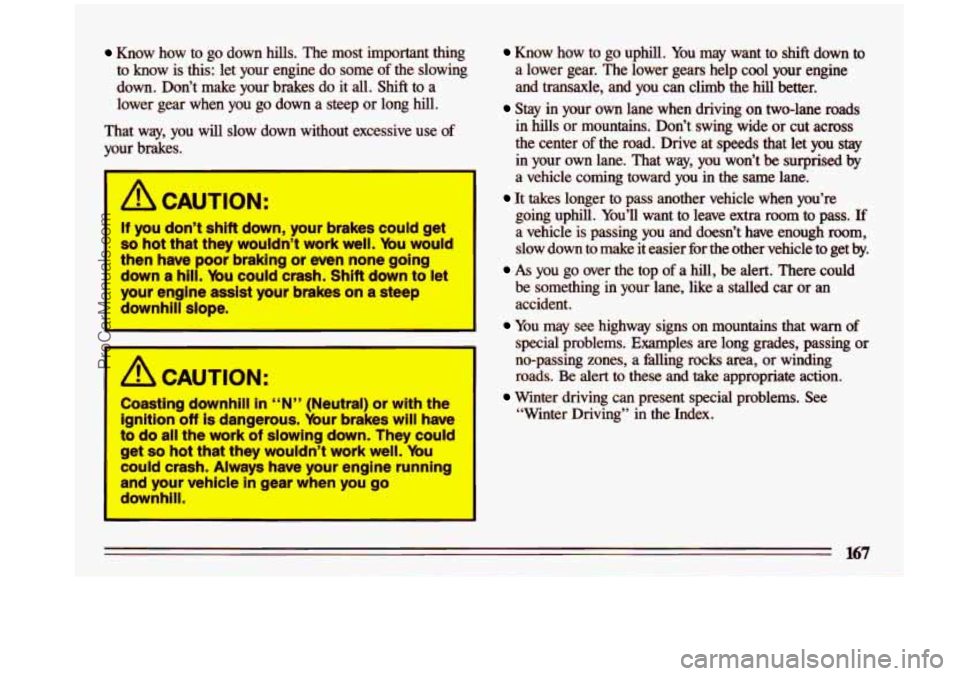Know how to go down hills. The most important thing
to know is this: let your engine do some of the slowing
down. Don’t make your brakes do
it all. Shift to a
lower gear when you go down a steep or long hill.
That way, you will slow down without excessive use
of
your brakes.
I A CAUTION:
If you don’t shift down, your brakes could get
so hot that they wouldn’t work well. You would
then have poor braking or even none going
down
a hill. You could crash. Shift down to let
your engine assist your brakes on a steep
downhil lope.
Coasting downhill in
“N” (Neutral) or with the
ignition off is dangerous. Your brakes will have
to do
all the work of slowing down. They could
get
so hot that they wouldn’t work well. You
could crash. Always have your engine running
and your vehicle in gear when you go
downhill.
Know how to go uphill. You may want to shift down to
a lower gear. The lower gears help cool your engine
and transaxle, and you can climb the
hill better.
Stay in your own lane when driving on two-lane roads
in hills or mountains. Don’t swing wide or cut across
the center
of the road. Drive at speeds that let you stay
in your own lane. That way, you won’t be surprised by
a vehicle coming toward you in the same lane.
going uphill. You’ll want to leave extra
room to pass. If
a vehicle is passing you and doesn’t have enough room,
slow down to
make it easier for the other vehicle to get by.
be something in your lane, like a stalled car or an
accident.
It takes longer to pass another vehicle when you’re
As you go over the top of a hill, be alert. There could
You may see highway signs on mountains that warn of
special problems. Examples are long grades, passing or
no-passing zones, a Ming rocks area, or winding
roads. Be alert to these and
take appropriate action.
Winter driving can present special problems. See
“Winter Driving” in the Index.
167
ProCarManuals.com
